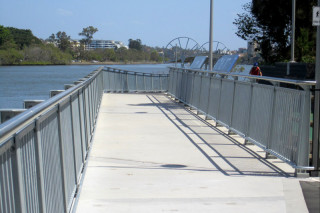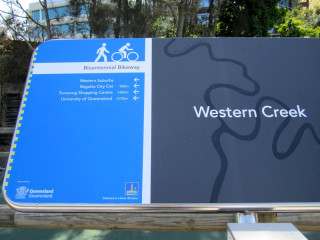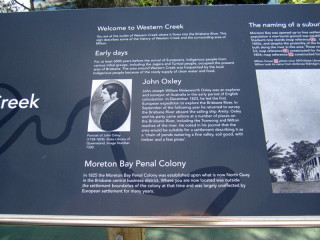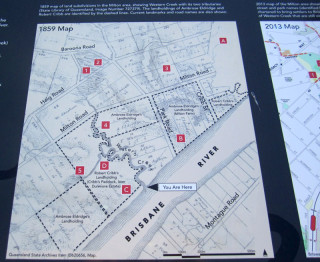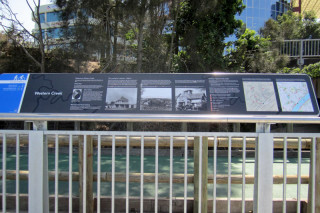A few months ago I moved out of Rosalie and the catchment of Western Creek. I didn’t want to leave, but such is the plight of a renter. I now am a citizen of Oxley Creek, which runs through my new neighbourhood of Rocklea.
So these days I am writing about Western Creek from a bit of a distance. I no longer get to notice the day-to-day changes that happen in the area, like the height of the pond at Norman Buchan Park, the movement of the heaps of dirt in Frew Park, and the state of the new footbridge being built along the bikeway at the mouth of Western Creek.
Luckily there are locals still keeping an eye out for me. A few days ago I learned from Steven Cowley that the footbridge has been completed. To our delight and surprise, the new bridge includes two large educational signs dedicated to the history of Western Creek and its surrounds. The first inhabitants, John Oxley’s arrival, the development of Milton, and the three creeks and bridges of the Milton Reach, are all covered. Accompanying the text are several large photographs from the State Library’s collection, and some maps illustrating the location of past and present landmarks, including Western Creek and Red Jacket Swamp.
It is rather beautifully done, and I am quite touched to see the effort that the council (and/or the state government) has made to promote the history of Western Creek and the Milton Reach. I hope that we will see more of these sorts of signs in Brisbane in the future.

